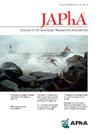Pharmacy harm reduction practices to help reduce opioid overdoses, Arizona 2023
IF 2.5
4区 医学
Q3 PHARMACOLOGY & PHARMACY
Journal of the American Pharmacists Association
Pub Date : 2025-05-01
DOI:10.1016/j.japh.2025.102348
引用次数: 0
Abstract
Background
Characterizing pharmacies based on their practices, community need for such practices and pharmacy type could advance pharmacy-based intervention precision to reinforce or increase pharmacy practices related to reducing opioid overdose deaths.
Objective
To measure a combination of 3 pharmacy practices focused on opioid overdose death reduction and explore whether there are discernable groupings related to practices, pharmacy characteristics, and community characteristics.
Methods
A telephone survey was conducted between August 1, 2023 and October 8, 2023 with the pharmacist on duty at 921 Arizona community pharmacies. The survey measured pharmacy characteristics, buprenorphine stocking, buprenorphine and naltrexone dispensing, likelihood of methadone dispensing for opioid use disorder (OUD) when legally permitted, and interest in state-subsidized naloxone dispensing.
Results
A response rate of 22.6% was achieved (N = 208). The vast majority (93.8%) of pharmacies stocked buprenorphine and dispensed buprenorphine or naltrexone. About half (47.6%) were very likely or somewhat likely to dispense methadone for OUD when permitted. Metropolitan pharmacies were less likely to dispense methadone compared to rural pharmacies (45.1% Vs. 75.0%). Among pharmacies not likely to dispense methadone, 85.3% were located in counties with opioid overdose death rates above the national average. About half of pharmacies indicated interest in enrolling as a distributor of state-subsidized naloxone. When considered together as pharmacy practices, 26% of pharmacies reported frequent buprenorphine or naltrexone dispensing, expressed interest in subsidized naloxone dispensing and a likelihood of methadone dispensing. Latent class analysis yielded 4 distinct groups of pharmacies ranging from those only dispensing buprenorphine or naltrexone frequently to adopters of the 3 pharmacy practices related to opioid overdose reduction in the community. The ‘adopters’ who frequently dispensed buprenorphine or naltrexone, who had interest in subsidized naloxone, and would likely dispense methadone for OUD tended to be in metropolitan or small/rural areas but tended not to be mass merchandizers.
Conclusion
An emerging group of pharmacies shows potential for greater adoption of pharmacy practices to reduce opioid overdose. Larger, multistate studies will help verify pharmacy latent class groups for greater precision of pharmacy practice interventions to reduce opioid overdose in communities. It is crucial to explore why pharmacies in higher need counties are not likely to adopt practices related to opioid overdose reduction.
减少药房危害的做法,以帮助减少阿片类药物过量,亚利桑那州2023年。
背景:根据药房的做法、社区对这种做法的需求和药房类型来描述药房的特征,可以提高基于药房的干预精度,以加强或增加与减少阿片类药物过量死亡有关的药房做法。目的:衡量以减少阿片类药物过量死亡为重点的三种药学实践的组合,并探讨是否存在与实践、药学特征和社区特征相关的可识别分组。方法:于2023年8月1日至10月8日对亚利桑那州921家社区药店的在岗药师进行电话调查。该调查测量了药房的特点,丁丙诺啡的库存,丁丙诺啡和纳曲酮的配药,在法律允许的情况下为阿片类药物使用障碍配药美沙酮的可能性,以及对国家补贴的纳洛酮配药的兴趣。结果:有效率为22.6% (N=208)。绝大多数(93.8%)的药店库存丁丙诺啡,配发丁丙诺啡或纳曲酮。在允许的情况下,大约一半(47.6%)的人很可能或有点可能使用美沙酮治疗阿片类药物使用障碍。与农村药店相比,大都市药店配发美沙酮的可能性较低(45.1%对75.0%)。在不太可能配发美沙酮的药店中,85.3%位于阿片类药物过量死亡率高于全国平均水平的县。大约一半的药店表示有兴趣注册成为国家补贴的纳洛酮经销商。当将其作为药房实践考虑时,26%的药店报告了丁丙诺啡或纳曲酮的频繁分发,表示对补贴纳洛酮分发感兴趣,并表示美沙酮分发的可能性。潜在分类分析产生了4组不同的药房,从那些只经常分发丁丙诺啡或纳曲酮的药房到采用与社区阿片类药物过量减少有关的三种药房做法。经常配发丁丙诺啡或纳曲酮的“采用者”,他们对补贴的纳洛酮感兴趣,并可能为OUD配发美沙酮倾向于在大都市或小/农村地区,但往往不是大规模的商人。结论:一组新兴的药店显示潜力,更大的采用药房的做法,以减少阿片类药物过量。更大的、多州的研究将有助于验证药学潜在类别群体,以更精确地进行药学实践干预,以减少社区中的阿片类药物过量。
本文章由计算机程序翻译,如有差异,请以英文原文为准。
求助全文
约1分钟内获得全文
求助全文
来源期刊
CiteScore
3.30
自引率
14.30%
发文量
336
审稿时长
46 days
期刊介绍:
The Journal of the American Pharmacists Association is the official peer-reviewed journal of the American Pharmacists Association (APhA), providing information on pharmaceutical care, drug therapy, diseases and other health issues, trends in pharmacy practice and therapeutics, informed opinion, and original research. JAPhA publishes original research, reviews, experiences, and opinion articles that link science to contemporary pharmacy practice to improve patient care.

 求助内容:
求助内容: 应助结果提醒方式:
应助结果提醒方式:


